1. Pyrex Mixing Bowls

Most shoppers see colorful bowls and think “grandma’s kitchen,” but vintage Pyrex can be highly collectible. The most valuable patterns—like “Lucky in Love” or “Gooseberry”—were produced in limited runs. Their bright hues and nostalgic charm make them favorites among collectors. Sets in pristine condition can sell for several hundred dollars.
However, recognizing genuine Pyrex takes practice. Fakes and reissues are common, and some colors fade over time. Trained eyes look for consistent pattern spacing and clear glass bottoms with specific manufacturer marks. A seasoned buyer can spot an original print from across the aisle.
2. Sterling Silver Flatware
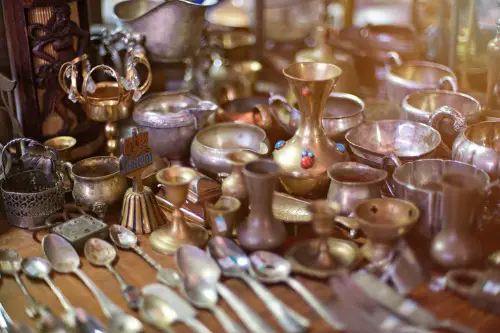
Silver-plated utensils are everywhere, but true sterling silver has enduring value. The trick is in the stamp—look for “925,” “Sterling,” or a lion passant mark. These small engravings distinguish valuable sets from cheap imitations. Even tarnished pieces can polish up beautifully and retain worth.
A trained buyer also feels the weight and checks for hallmarks that match specific makers. Certain brands, like Gorham or Tiffany & Co., can fetch a premium. Knowing pattern names helps identify rare collections. Without that insight, most shoppers just see dull cutlery.
3. Mid-Century Modern Furniture

To the untrained eye, an old wooden chair might look like junk, but mid-century modern pieces can be worth thousands. The key is in the craftsmanship—look for tapered legs, teak wood, and minimal hardware. Original pieces from designers like Eames or Knoll are often unmarked, so subtle design cues matter. A collector who knows these traits can turn a $50 find into a four-figure flip.
Many reproductions mimic the style, so buyers need to inspect construction details. True mid-century furniture will use solid wood, not veneer, and have dovetail joints. Even the screws and finishes can help identify authenticity. A few scuffs don’t hurt either—restoration is part of the appeal.
4. Vintage Vinyl Records
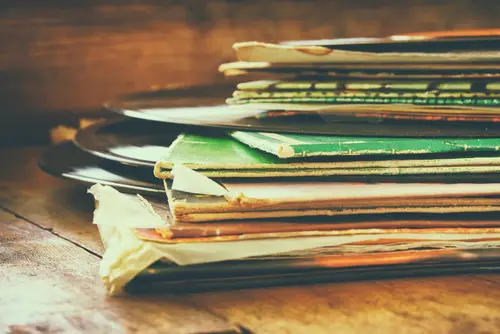
Record bins are full of common titles, but rare pressings are gold for collectors. Original releases from artists like The Beatles or Pink Floyd can be worth hundreds or even thousands. What matters most is the matrix number, label design, and condition of the sleeve. To the casual browser, all records look the same, but details make the difference.
Experienced diggers know to check for “first press” markings or misprints that indicate rarity. They also understand grading standards—Mint, VG, or G—that determine value. Some bootlegs are collectible too, depending on their history. Without that context, buyers might pass up a treasure for $2.
5. Depression Glass
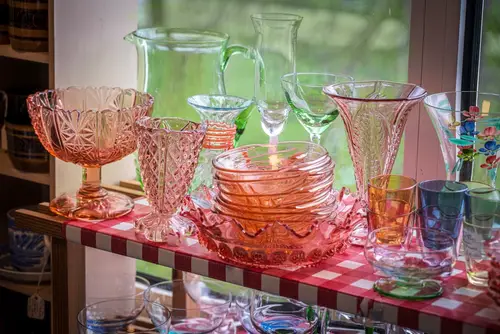
Pretty pink or green glassware might seem like mere decoration, but Depression glass has deep historical value. Produced cheaply during the 1930s, it’s now prized for its colors and patterns. Patterns like “Cameo” or “Princess” are especially sought after. Trained collectors can identify them by the design molds and slight imperfections.
Untrained shoppers might mistake reproductions for originals, especially since both can look similar under poor lighting. Authentic pieces usually have a slightly rough feel due to older manufacturing methods. They also glow under UV light, a trick seasoned buyers use. Spotting these details takes experience and patience.
6. Vintage Advertising Signs
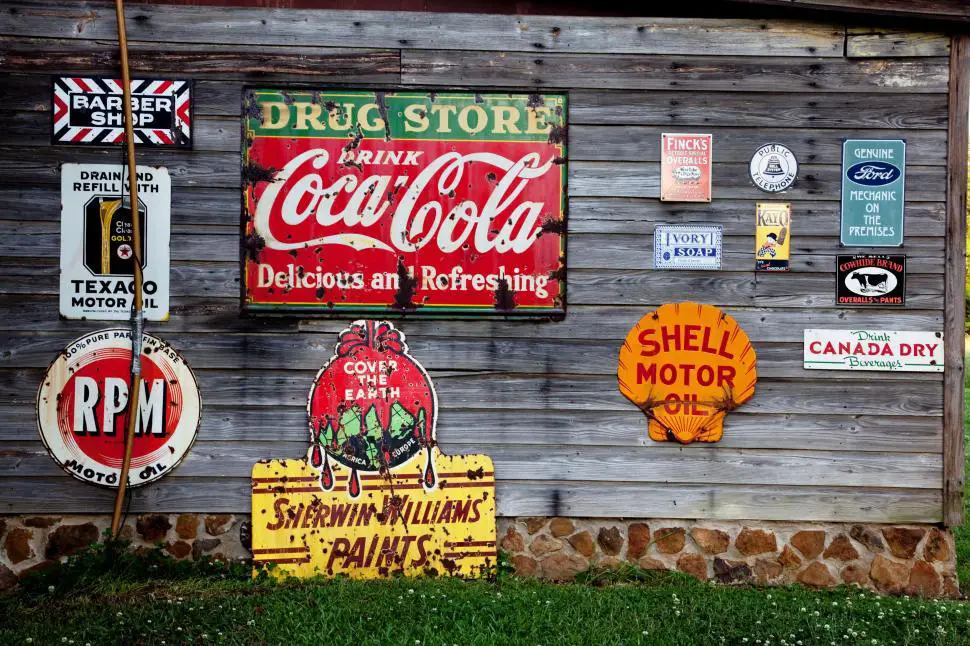
Rusty old signs can look like scrap metal, but authentic vintage ads are hot collectibles. Original enamel or tin signs from brands like Coca-Cola or Sinclair Oil are especially valuable. The appeal lies in their nostalgic design and rarity. A trained collector knows how to spot modern reproductions by their color and wear patterns.
Reproductions tend to have uniform rust or machine-printed graphics. Originals, by contrast, show age where you’d expect—around bolt holes or edges. Authentic signs also feel heavier and often have layered enamel textures. For those who know what to look for, they’re easy money.
7. First Edition Books
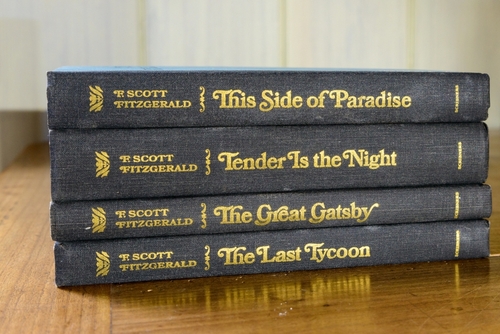
A pile of dusty books rarely excites casual shoppers, but first editions are another story. Early printings of famous titles—like The Great Gatsby or Harry Potter and the Philosopher’s Stone—can command staggering prices. Identifying one isn’t easy; publishers change printing details frequently. Knowing how to decode copyright pages separates novices from pros.
Seasoned buyers check for specific first-edition indicators, like “First Printing” or number lines that start with “1.” Dust jackets also matter—an original can double the book’s value. Even small typos or design quirks can mark a rare variant. For most people, it just looks like another old novel.
8. Vintage Costume Jewelry
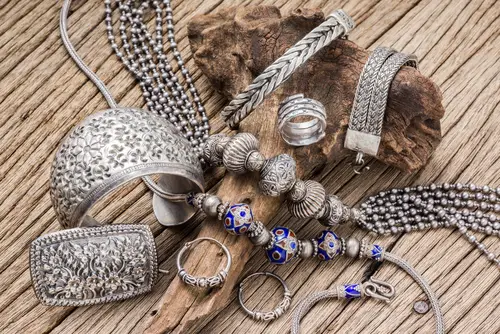
Many people overlook costume jewelry because it’s not made from precious metals. But pieces from designers like Trifari or Miriam Haskell can be extremely valuable. These brands crafted intricate designs that rival fine jewelry in quality. Trained collectors know to check for tiny maker’s marks on clasps or backs.
Untrained buyers often mistake patina for damage, when it can actually confirm authenticity. The construction and weight of the piece are other giveaways. Some rhinestones were hand-set, not glued, and that detail can mean a higher price. Recognizing those cues takes time and study.
9. Military Memorabilia
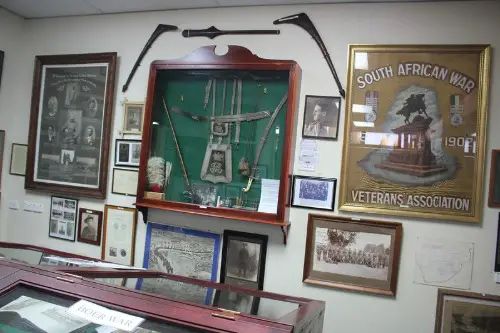
Old uniforms and medals often go unnoticed, but authentic military items can be highly collectible. World War II-era pieces, especially from notable divisions, have a strong market. The challenge is distinguishing genuine artifacts from reproductions. Trained collectors look for stitching, material type, and manufacturer markings.
Novices might miss small clues like serial numbers or insignia placement. Even paper items—letters, maps, or ration books—can hold historical value. Experts understand provenance, which dramatically affects worth. To most people, they’re just relics; to a collector, they’re history.
10. Vintage Cameras
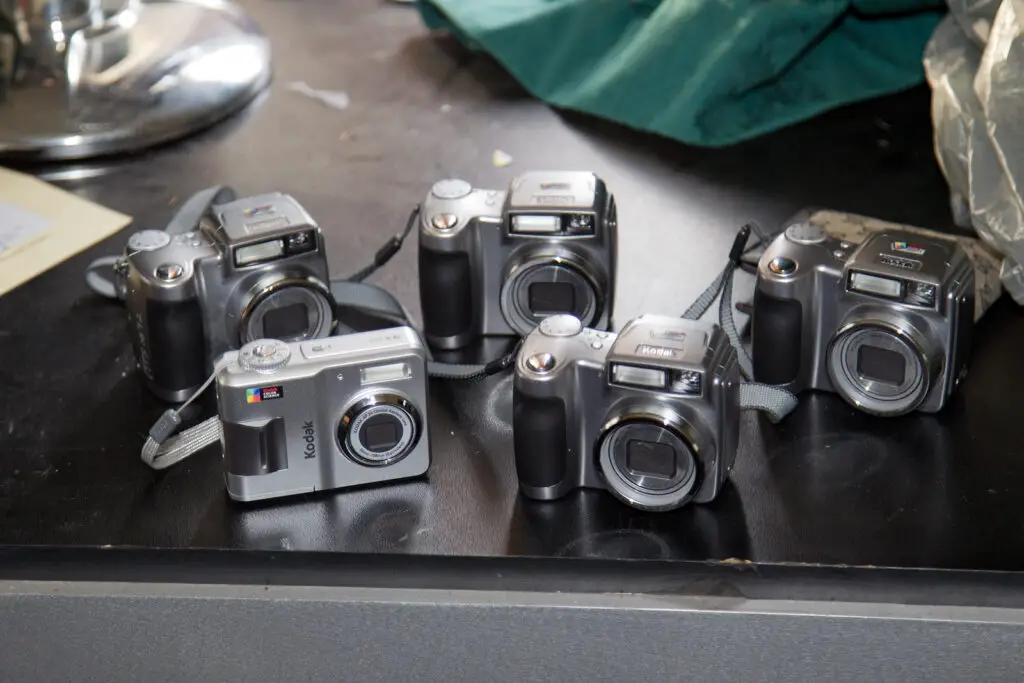
Boxy old cameras might look like junk, but some models are incredibly valuable. Brands like Leica, Rolleiflex, and Hasselblad have cult followings among photographers. Specific serial numbers can indicate rare early runs. Trained buyers also check the lenses, which can be worth more than the body itself.
Condition and functionality matter, but even non-working models can fetch good prices. Collectors value craftsmanship and historical context over convenience. Recognizing subtle differences—like lens coatings or engravings—takes experience. Without that eye, most shoppers just see outdated tech.
11. Handwoven Textiles
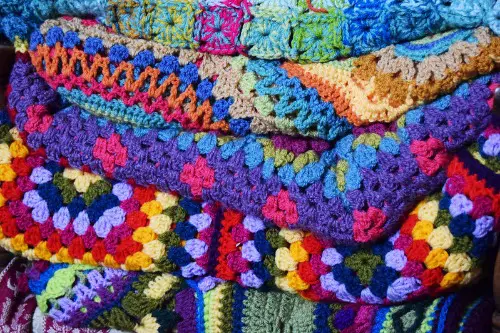
Flea markets often have stacks of blankets and rugs, but trained eyes spot handwoven treasures. Navajo rugs, Persian carpets, and Andean textiles can be worth thousands. The weave pattern, dye type, and imperfections indicate authenticity. Synthetic threads or machine stitching usually mean mass production.
Collectors look closely at fringe finishes and fiber texture. Natural dyes produce subtle color variation, a telltale sign of handcrafting. The feel of the fabric often reveals age and origin. To the average shopper, it’s just a colorful rug—until someone with knowledge shows its true worth.
12. Vintage Tools
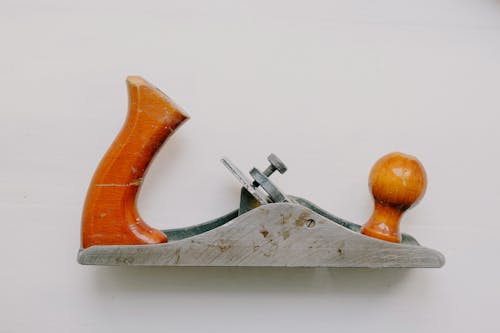
Old hammers and planes may seem worthless, but collectors pay well for certain brands. Stanley planes, especially early models, are highly prized among tool enthusiasts. The shape of the handle and engraved logos can indicate value. Experts know to look for patent dates and casting differences.
Many reproductions look convincing but lack the weight or fine detailing. Restored pieces can also lose value, so trained buyers look for untouched examples. The appeal lies in craftsmanship from a bygone era. For those who know tools, these finds are like industrial art.
13. Bakelite Accessories
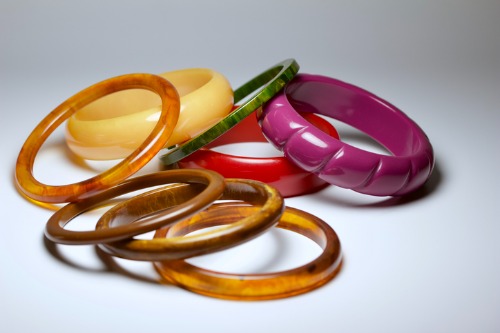
Brightly colored bracelets or radios made from Bakelite can fetch surprising prices. Bakelite, an early plastic, was used from the 1920s to the 1940s and is now collectible. The trick is confirming the material—it has a distinctive smell when warmed and makes a “clunk” sound when tapped. Trained buyers often carry test kits for certainty.
Modern plastics can look similar, fooling beginners. Bakelite also tends to yellow or darken slightly with age, which experts recognize. Some pieces were made by renowned designers, further boosting their value. Knowing the difference can turn a $5 buy into a $500 sale.
14. Pottery and Ceramics
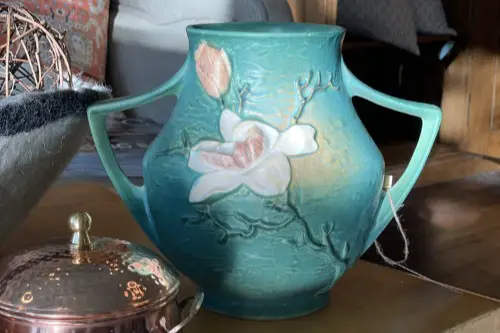
Old pottery might just look rustic, but signed studio ceramics are highly collectible. Makers like Roseville, Rookwood, or Van Briggle left identifying marks that are easy to miss. Glaze style, color blending, and clay texture all hint at authenticity. Collectors prize limited runs and artist-signed pieces.
Fakes often have inconsistent glaze drips or incorrect base marks. Trained buyers know to gently flip a piece and check for kiln stilt marks. Even small chips don’t necessarily ruin value if the piece is rare. To the untrained eye, though, it’s just another vase.
15. Vintage Clocks and Watches
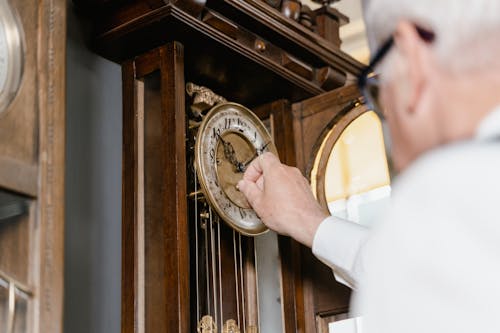
Old clocks are everywhere at flea markets, but few know which ones are special. Timepieces from brands like Omega, Hamilton, or Seth Thomas hold serious value. Experts inspect movement types, case materials, and serial numbers. A trained ear can even detect the rhythm of a well-crafted mechanism.
Reproductions often use quartz movements instead of mechanical ones. Original faces may have hand-painted numerals or fine engraving. Collectors appreciate patina, not polish—it tells the story of time itself. Without knowledge, most buyers just hear ticking and move on.
16. Early Electronics
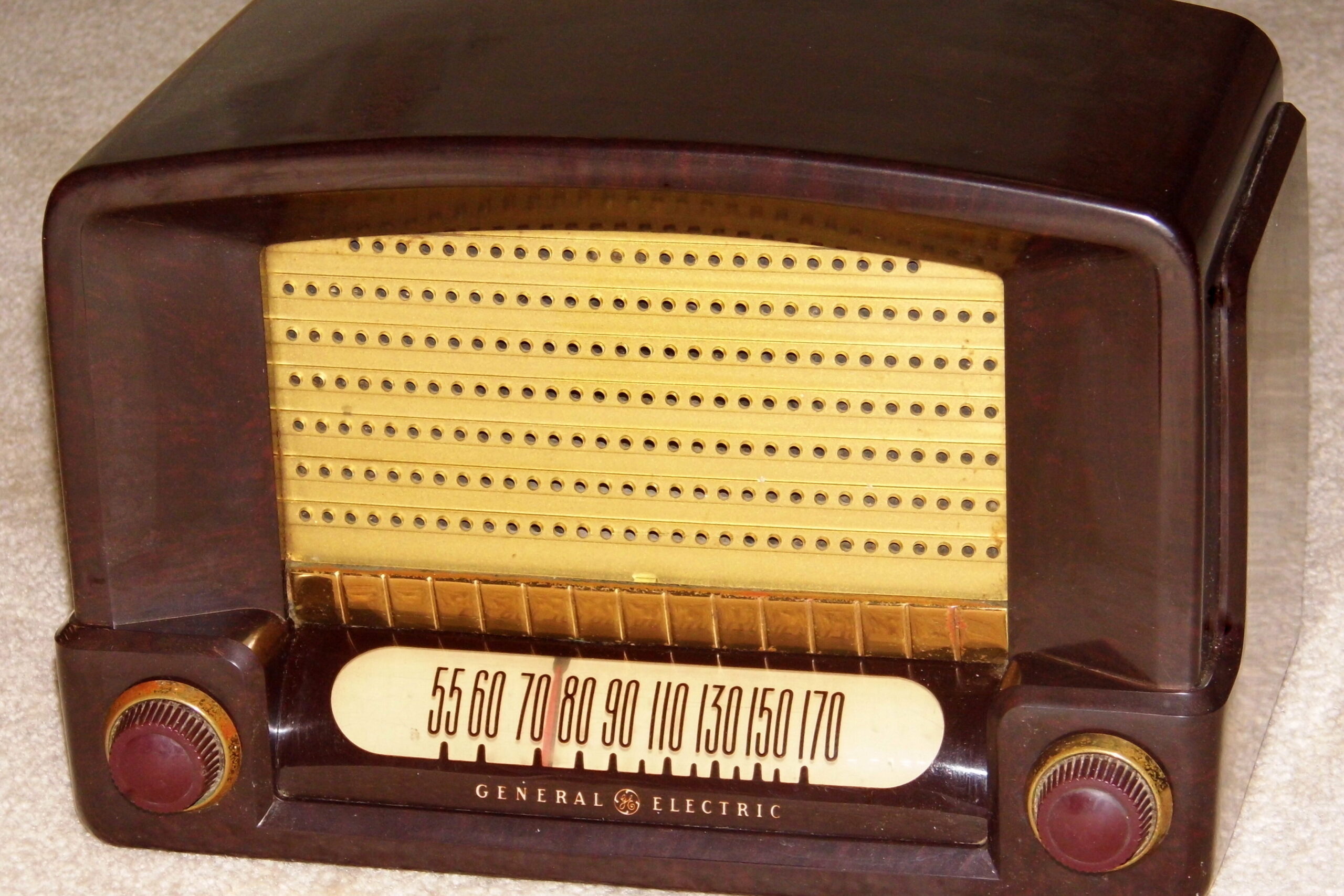
Bulky radios, typewriters, or tube amps might seem outdated, but they’re collector gold. Early electronics from RCA, Zenith, or Fender can command high prices. Trained eyes recognize rare components, like vacuum tubes or original badges. Some hobbyists restore these pieces for both nostalgia and performance.
Casual buyers might skip them due to rust or missing parts. But experts know which details make restoration worthwhile. The sound quality and design of these machines tell a story of innovation. To the trained collector, they’re more than gadgets—they’re artifacts of progress.
This post 16 Flea Market Finds That Buyers Can’t Spot Without Training was first published on Greenhouse Black.
